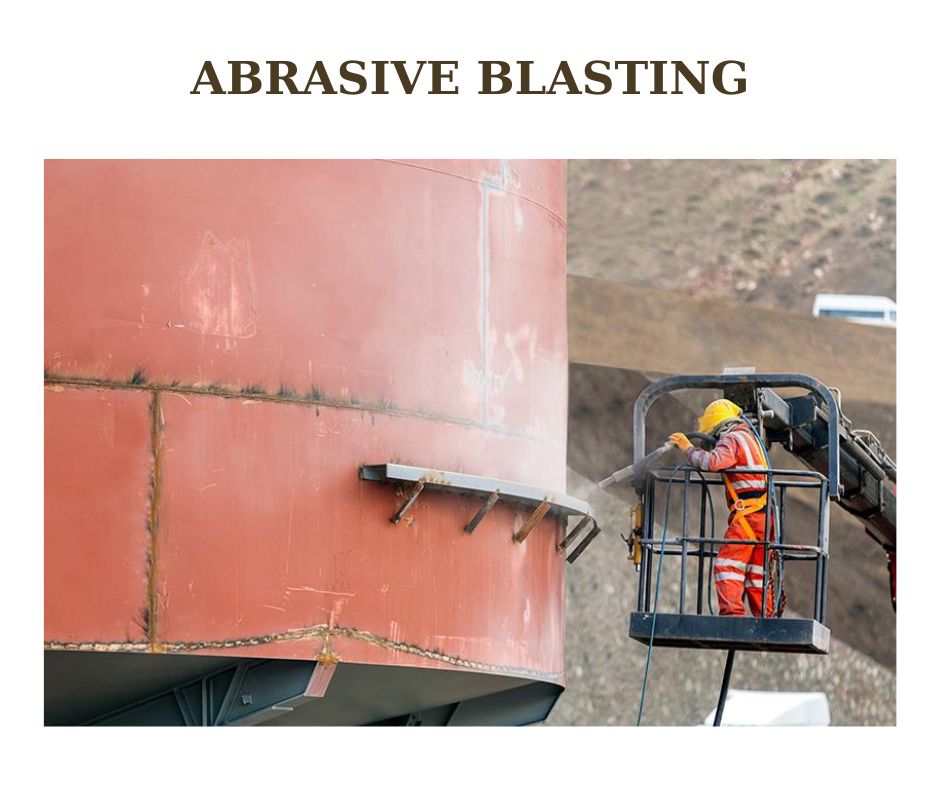
what are the different types of abrasive blasting and the materials involved?
When you are planning to prepare a surface for either painting or reshaping it, you must know that there are plenty of ways to achieve it. Preparing a surface involves removing rust and contaminants from the surface so that the application of anything on it is achieved properly. One of the ways is abrasive blasting.
What is abrasive blasting?
Abrasive blasting that is also called sandblasting is a process in which compressed air or water is used to project a high-pressure stream of abrasive materials onto the surface. The purpose of this project is to roughen the smooth surface, smooth the hard surface, reshape it, remove rust and contaminants, and quickly clean surfaces for painting and texture application.
The different types of abrasive blasting:
There is a range of abrasive blasting that uses different abrasive materials has different results and is used for different purposes. These are:
-
Sandblasting:
In this technique, dry silica abrasive particles are projected at high velocities onto the surface. Silica or quartz is the abrasive material used in this blasting at high speeds. The consistency of the abrasive and its sharpness help in achieving the steadiness of finishing of surface. It is commonly used to remove any type of contaminants from the surface being prepared. It is designed in such a way that it is famous for removing rust from objects effectively. Air pressure is used to project these dry abrasive particles onto the surface. The apparatus is handheld and the abrasive is ejected from the nozzle. As its particles spread in the air, it is preferably used in open spaces so that it is not hazardous for the worker to work in it. The silica used in the blasting is dangerous to the health as there is a high chance of the abrasive getting inhaled. Therefore, it is not recommended to be used now.
-
Wet blasting or water blasting:
This was designed to control the airborne dust that resulted in air blasting. The technique works in such a way that water is injected into the nozzle near the ejection of blasting material or in some cases water is even mixed with the abrasive before the ejection occurs. Whatever the case is, the mixture that is ejected onto the surface at a higher speed contains water, abrasive and air to clean the surface. For it to be environmentally friendly the residues left at the end are strategically managed. Water used in it is to prevent dust but it needs a longer time to dry.
-
Vacuum blasting:
This technique is also known as dustless blasting. As the name refers, the residues left are immediately sucked back into the control unit to clean the environment. The blasting machine has a vacuum attached to it. The machine cleans up the surface by removing contaminants from the surface and simultaneously cleaning the air from abrasives with the help of a vacuum. The blasting has the advantage of recycling and reusing spent abrasive which is cost-efficient. But this recycling method makes the vacuum blasting slower than other methods.
-
Centrifugal blasting:
It is also called wheel blasting. The machine consists of a big wheel that emits the abrasive onto a larger surface. This is used for continuous blasting processes or for surfaces that are huge and have a high surface area. The machine has a motor-operated blade wheel that projects the abrasive at very high speeds onto the object. This technique provides you with an effective cleaning process resulting in uniform surfaces. But the problem is that the machine used is not portable and easy to carry and does not work on uneven surfaces. Just like vacuum blasting, it’s an ideal choice for cleaning as it also collects the debris left behind and recycles the abrasive.
-
Soda blasting:
The innovation in abrasive blasting is soda blasting. Sodium bicarbonate is used as an abrasive and targeted to the surface with high air pressures. Sodium bicarbonate is known to be an effective abrasive to clean contaminants from the surface. The soda is broken down on an impact with the surface and thus cleans the surface. It’s a much gentler form of blasting and can be easily done at low pressures. This property of soda blasting makes it a good choice to be used on softer surfaces like glass, plastic or chrome. However, the disadvantage is that the abrasive can’t be recycled in the process.
-
Steel grit blasting:
This is specially designed for cleaning steel surfaces. The abrasive used in the process are spherical steel balls. It is affected to remove rust and remove paint from the steel surfaces. The use of steel grit gives a refined uniform finish to the metal and helps in peening which makes the metal strong. Other abrasives like aluminum, silicon carbide and walnut shells can also be used in this procedure but they are selected according to the type of metal they have to be blasted on.
-
Bristle blasting:
This is the only blasting technique that does not require blasting abrasive. Instead of an abrasive, steel wire bristles are used that are directly rotated on the surface for the cleaning mechanism. This makes the surface clean, smooth and uniform. It greatly helps in cleaning metal surfaces that are deeply affected by corrosion.
-
Dry ice blasting:
Just like soda blasting, this is also a new form of abrasive blasting. It involved carbon dioxide pellets to be blasted with the help of high air pressure. It’s a special kind of blasting because the carbon dioxide used doesn’t react with the contaminants on the surface and is also non-toxic. Its non-toxic nature makes it a great choice for clean food processing tools. The liquid carbon dioxide is frozen and reserved in crystallized form. The impact of these crystals emitted at high pressures onto the surface creates a heating effect that breaks down the bond between the contaminants and the surface. The carbon dioxide then vaporizes into the air. This mechanism makes the process fast and clean. Thus no abrasive is used and recycled. Carbon dioxide is safe so this process is ideal for cleaning sensitive electrical equipment.
-
Pencil blasting:
Also called micro blasting involves a mixture of air pressure and fine powder working as an abrasive. The abrasive is blasted in the form of a thin pencil-like stream that is targeted on the specific areas of the surface to be cleaned. The fine pencil-shaped stream does not only work for surface cleaning but can also be used to cut, drill or deburr the surfaces by applying varying pressures. This kind of blasting is important when precision is needed. This blasting technique is even used to change the surface of a diamond and in glass etching.
-
Bead blasting:
As the name suggests, glass beads are used as an abrasive with the help of air pressure on the surface. They are used for cleaning, deburring and peening metal surfaces. They give the surface a uniform finish and are recyclable. Glass beads are safe for the environment and are non-toxic. The finer glass beads give a dull finish when used against metals like aluminum while coarser beads give a uniform and rough finish.
-
Conclusion:
So as you can see there are different types of abrasive blasting and the different abrasives are used in each. So it’s important to bear in mind the factors related to blasting whenever you are attempting it, to have effective results and less environmental damage. The type of blasting must be chosen by taking into account all the required elements such as the material to be blasted on.



